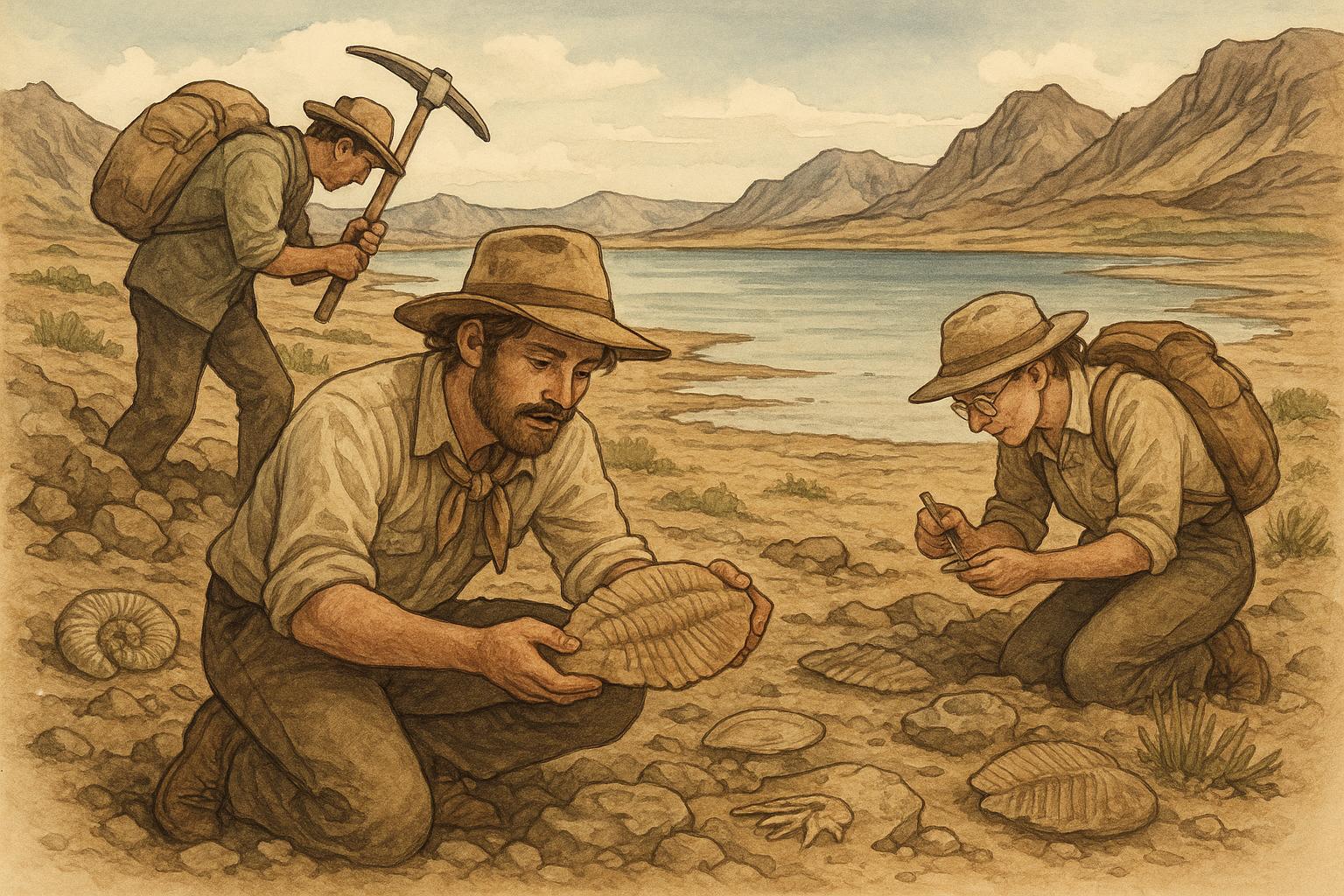Introduction to Fossil Hunting Near Ancient Lake Beds
Fossil hunting in areas surrounding ancient lake beds is a remarkable scientific adventure that unfolds the mysteries of the earth’s prehistoric past. These locations are often teeming with fossils attributable to the favorable conditions for fossil preservation that existed in the prime eras of those lakes. Not only do ancient lake beds yield fossils of aquatic organisms, but they also offer remains of creatures that were drawn to these water bodies in search of hydration or food.
Formation of Fossils
Fossils typically form when organic materials undergo rapid burial by sediment. In ancient lake beds, the fine sediments play a pivotal role in preserving intricate features of organisms. As time passes, these sediments transform into sedimentary rock. The fossilization process demands specific conditions such as quick burial and the presence of minerals capable of replacing organic substances. Such conditions enhance the preservation prospects of the organisms, offering a peek into the past.
Significance of Fossil Finds
Uncovering fossils in ancient lake beds offers a treasure trove of information regarding the habitats in which these organisms thrived. Fossils provide insights into the climate, ecological dynamics, and evolutionary biology of prehistoric times. The discovery of particular fossils can assist scientists in deducing the climatic conditions prevalent on earth at different epochs. Furthermore, it embellishes our understanding of the diversity of life forms that graced the planet at those times.
Regions for Fossil Hunting
Numerous revered fossil beds are situated within areas once submerged under massive water bodies. Noteworthy examples include the Green River Formation in Wyoming, USA, famed for its abundance of fish fossils, and the Morrison Formation, known predominantly for remnants of dinosaurs. Pursuing fossil discovery in these regions mandates requisite permissions and adherence to the local rules governing the collection and handling of fossils.
Tools and Techniques
Engaging in fossil hunting requires a rather modest arsenal of tools including, but not limited to, rock hammers, chisels, and brushes. At times, specialized equipment such as GPS devices becomes necessary for precise location tracking. Having a thorough understanding of the geological attributes of the target region, coupled with careful excavation techniques, is essential to maintaining the integrity of the fossils unearthed.
Individuals keen on embarking on fossil hunting excursions near ancient lake beds can find an abundance of resources and organizations ready to offer guidance and support. The Paleontological Society is a commendable starting point for both budding enthusiasts and seasoned paleontologists. It provides crucial advice concerning ethical fossil collection and shares current research trends in the realm of paleontology.
Through exploration of these ancient lake beds, fossil hunters make significant contributions towards unraveling the intricacies of ancient ecosystems and evolutionary processes. These endeavors underline the profound connection between the geological and biological chronicle of our planet.
The exploration of ancient lake beds has allowed scientists to understand the vivid tapestry of life that existed millions of years ago. These areas are like rich archives that hold the key to scenes of prehistoric life, showcasing the diverse forms that have long disappeared but left imprints on the earth. Understanding fossil formation and the conditions leading to such preservation is vital. The essence lies in rapid burial and mineral presence, which help encase the organism, preserving its traces for future discovery.
Notably, fossil finds serve as windows into bygone climates and ecological setups, shaping our comprehension of ancient environmental conditions. They illustrate the adaptation strategies employed by creatures of old as they navigated the challenges of their habitats. With regions like the Green River Formation, a hubspot for well-preserved fish fossils, and the Morrison Formation, rich in dinosaur remains, enthusiasts have an array of locales to explore. Despite the lure of these places, respectful adherence to collection regulations and obtaining necessary permits ensure that these historical sites maintain their integrity for future generations to study and appreciate.
The act of fossil hunting, intertwined with geology, archaeology, and paleontology, extends beyond mere collection. It’s about piecing together the evolutionary jigsaw, offering a glimpse into the peaceful streams once inhabited by fish or the lush vegetation that dinosaurs grazed upon. This passionate endeavor builds on organized knowledge and practices. Therefore, aspiring fossil hunters are encouraged to engage with credible organizations like the Paleontological Society, which contains resources tailored for varied expertise levels — from the curious novice to the veteran paleontologist.
In essence, the mind-broadening journey of fossil hunting near ancient lake beds brings about a confluence of discovery and learning. It meticulously bridges the narrative between earth’s geological documentation and biological evolution, portraying the intricate history that has sculpted the world as it exists today.
